What causes dapples?
Forums
Re: What causes dapples?
I recently saw a very light cremello who was so dappled it was just amazing - in gorgeous shape...but that really just got me thinking, "WHY does that happen?"
I wonder how many other species get dappled. I generally practice good nutrition, but I don't have dapples. ;)
Re: What causes dapples?
Palomino definitely lends itself to dappling, and it may or may not have anything to do with health.
IME animals also "dapple" when they are coating...at least my Roan and my Silvers do, when some of the hair seems to die off quicker than the rest, in patterns, so it could be why health affects dappling.....
Re: What causes dapples?
The nutrition link is weird because all my horses eat the same things but only some dapple.
Oh, the paint mare with dapples reminds me that Owen had dapples last year. For those who don't know, Owen is a totally white gray pony with not a single speck of his original color left (chestnut) but he definitely had white on white dapples last spring and summer. It could only be seen in certain lights.
Re: What causes dapples?
[quote="Sara"]The nutrition link is weird because all my horses eat the same things but only some dapple.
Oh, the paint mare with dapples reminds me that Owen had dapples last year. For those who don't know, Owen is a totally white gray pony with not a single speck of his original color left (chestnut) but he definitely had white on white dapples last spring and summer. It could only be seen in certain lights.[/quote]
Well MP would be the better one to speak about this, but each horse seems to require a slightly different food to meet their own ideal health so you may have some perfect (and thus dappling) and the other may be receiving a little too much or a little too little of some particular nutrient or such. Maybe... just a thought.
I've got a friend with a gray mare who looks white except for her legs, but when she wets her down she has black spots all over her that make her look like a dalmation. I think grays are very weird.
Re: What causes dapples?
So how much fat and minerals do I need to give my paint mare to get her sooty or liver body to dapple?
I think I'd be in heaven. Or her son for that matter who's got way more chestnut?
KK is dappled from greying....
She currently gets about 4lbs of Safechoice mixed 50/50 with XTN, and Timothy Alfalfa hay.
Re: What causes dapples?
There is more to it than just fats and minerals. It depends on coat type and pigment placement as well so genetics plays some role. Some horses won't ever develop dapples no matter what you feed. The minerals that matter most are copper, sulfur and zinc as they are involved in hair shaft formation/quality. Your best bet for minerals is to offer a low salt, free-choice mineral designed specifically for horses, best if it is formulated for your specific region. BOSS and flax seed are good fat sources or just a splash of oil. XTN already has high fat so you might not need any more oil if they have shiny, healthy coats already. Also, coat quality takes a lot of time to develop. You have to wait for the next shed before you see the results as nutrition can't do too much for hair that is already present.
This is my chestnut that gets free-choice LMF minerals and BOSS. He as as shiny and healthy as he can be, but he doesn't really get dapples. He does, however, get really dark Ben D'or spots (look at his upper flank). I had to attempt three different days to get these photos because he was so shiny that the sun was reflecting off his coat and ruining the photo.
[img]http://i83.photobucket.com/albums/j294/…]
Re: What causes dapples?
Well what is so frustrating is that they both fade so quickly. I am trying a new sunblock this year, and Cyn will be leaving for training soon when the vet OKs light stuff, but they shed out SO dark. All split about 3/4 cup ground flax which is already in XTN, but I fear it looses some effect on the way here. I haven't done BOSS in awhile. Maybe I'll get that back out. Both have really really dry dry coats. Mane breaks easily, tail less so, but is thick. If I flip Cyn's mane over (what I've saved?) it's a nice burgundy color. The top? light and broken. I put MTN on it once a week, but I think it needs something else. I fear it will all leave us like his mother's thinner, but only inches long mane...
Re: What causes dapples?
You know, sometimes my young horses (I'd say three and younger but most pronounced in yearlings) just have those stupid dry coats no matter what I do. It's as though maybe they're going through such a wacky growth phase when the coat is coming in that they just can't make a nice one no matter what they're eating but it usually corrects itself with the next shed.
Re: What causes dapples?
[quote="accphotography"][quote="Sara"]The nutrition link is weird because all my horses eat the same things but only some dapple.
Oh, the paint mare with dapples reminds me that Owen had dapples last year. For those who don't know, Owen is a totally white gray pony with not a single speck of his original color left (chestnut) but he definitely had white on white dapples last spring and summer. It could only be seen in certain lights.[/quote]
Well MP would be the better one to speak about this, but each horse seems to require a slightly different food to meet their own ideal health so you may have some perfect (and thus dappling) and the other may be receiving a little too much or a little too little of some particular nutrient or such. Maybe... just a thought.
I've got a friend with a gray mare who looks white except for her legs, but when she wets her down she has black spots all over her that make her look like a dalmation. I think grays are very weird.[/quote]
I think you have probably hit on something here...that would also explain why some horses do dapple on the same amount of food that others do not dapple on.
It's the [i]optimum[/i] level of nutrition that varies from horse to horse, so they could all be in good condition, but just some are at the optimum level maybe???
Re: What causes dapples?
[quote="rabbitsfizz"]
I think you have probably hit on something here...that would also explain why some horses do dapple on the same amount of food that others do not dapple on.
It's the [i]optimum[/i] level of nutrition that varies from horse to horse, so they could all be in good condition, but just some are at the optimum level maybe???[/quote]
That's what I was thinking, yup. *nods*
Re: What causes dapples?
Hmm, based on my experience I don't think so. Ginny is incredibly fit and so shiny in her summer coat that she looks like polished metal but never gets dapples. She does go through a false dun stage during her spring shed (she's got it right now) but never dapples. Isabelle always dapples in the summer no matter what her condition or feeding pattern is. I think it's just... a thing that some horses get, loosely related to nutrition but not an absolute thing.
Re: What causes dapples?
[quote="Jenks"]They all have the mineral blocks in their stalls and there are 2 in the pasture - the red ones? Could they be missing something? I've never read the labels to see if they are all the same.[/quote]
I am not a fan of salt blocks as mineral sources. They tend to have such a high salt concentration that the horses fulfill their salt intake needs before they get enough of the trace minerals. Also, many tend to be deficient in certain minerals for horses because horse levels of minerals can be lethal in some agricultural animals. I've found that offering a low-salt (usually 40-60% salt rather than the usual 95-98%) loose free-choice mineral made specifically for horses in a bucket with a plain iodized salt block will usually provide horses with the correct amount of mineral access. If you are switching your horses over to a free-choice mineral, you will probably see them wolfing down the minerals at first so you don't want to offer more than a few ounces at a time or they will overeat it (I had one horse chase me down trying to take mouthfuls out of the bucket I was carrying). When we first switched our 25ish ponies over to the free minerals from trace mineral blocks, we went through a 40lb bag in a couple weeks and then leveled off to a bag every 6 weeks or so, if I recall correctly. At the same time, all of our wood chewers stop eating the fences.
Re: What causes dapples?
Where you put them depends on where your horses spend a lot of time. I have a bucket in the stall of the only horse that lives in a stall and at least one in every paddock shelter. Not sure what the weather is like where you are, but I have to make sure the buckets are under cover here otherwise I would have mineral soup within a few days.
Re: What causes dapples?
Jenks- They are usually just called loose or free-choice minerals. The biggest factor that you want to check is the level of salt. Also, finding a regional brand is the best option as national ones aren't usually formulated for your specific area. I'll see if I can find a local brand that might have what you are looking for.
CC- see if you can find LMF minerals. They are a feed company specific to the west coast. I have to ask the feed store to specifically order it in as the ones they normally carry are the high salt variety. http://lmffeeds.com/cart/index.php?main…" onclick="window.open(this.href);return false;
Re: What causes dapples?
Well, this was all the 3rd store had with low salt. It's made by Purina and is Nature's Essentials.
I'm going to have my Nutrena store order me some "Loose" minerals - have a recommendation?
In the meantime, I got this top dressing that has:
Ca 12-14%
P 12%
NaCl 4.5-5.5%
K .40%
Mg 1.2%
Cu 1740 ppm
Zn 6800 ppm
Sc .35-.36 ppm
I 40 ppm
Fe 4300 ppm
Co 9ppm
Mn 3400 ppm
S .10ppm
Vit A 80000 IU/lb
Vit D 8000 IU/lb
E 1,400IU/lb
I gave them about 1 tablespoon tonight (recommended 2oz - I will work up to it), added about 1/3 c of BOSS along with their regular feed, the ground flax -1/3 cup each -which I grind right there, and their Tim/Alfalfa mix. I will take photos for before tomorrow! How long do you think it will take to see a difference? I know the mane will be 6 months before it's really even close to recovered, but ....
Re: What causes dapples?
Wood chewing stopped? *gasp* I have birthed a beaver... Im looking into this asap, she is eating the barn down ...really... Dosent help she is on 8 weeks stall rest due to having frankenstein leg...almost at 3 weeks Im tossing her outside this weekend..she is going ko-koooo.
Re: What causes dapples?
These guys are fantastic from what I hear:
http://dynamitemarketing.com/" onclick="window.open(this.href);return false;
Re: What causes dapples?
Woo, my feed store is going to try to order me a bag of the LMF minerals. The only loose minerals they had were 95% salt! I have a beaver in my barn too (ahh, the beautiful brand new barn! I kick myself for not having something in the contract about paying for damages like that!) and I'd be thrilled if the minerals get her to stop.
Re: What causes dapples?
Jenks- I'll dig through Nutrena and see what I can find. The top dressing should help with mineral deficiencies. The first place you will be able to see a difference is probably in hoof quality since it's probably too late to see any effect in the summer coat, but there should be a difference in the winter coat. The BOSS/fats will probably add a bit more sheen to the summer coat sooner as the body is able to produce more oils.
I dug up the mineral soil content and it looks like Georgia is even worse off for minerals than the PNW.
[url=http://tin.er.usgs.gov/geochem/doc/aver…]
[url=http://tin.er.usgs.gov/geochem/doc/aver…]- not sure I trust this one completely because every nutritionist/expert I have talked to and resource I have read says that the PNW is deficient in copper
[url=http://tin.er.usgs.gov/geochem/doc/aver…]
[url=http://tin.er.usgs.gov/geochem/doc/aver…]
As Diane said, it would be good to do a blood test to see what levels they are at now. It is actually pretty difficult to induce acute copper and selenium toxicity in horses. Sheep, on the other hand, will drop dead at the sight of copper :lol:.
Heather- Is she actually chewing/eating the wood or just windsucking? Pica (eating aberrant things like rocks and wood) is often a sign of nutrients missing in the diet. You can also see coprophagia (poo eating) with deficiencies. We had two determined wood eaters that have completely stopped since introducing free-choice minerals.
ACC- I have used Dynamite products in the past (used Izmine for awhile), but I haven't look into their mineral supplements recently. A quick glance shows that their [url=http://dynamitemarketing.com/Natural_Tr… Trace Minerals[/url] is 93-98% and their [url=http://dynamitemarketing.com/Vitamin~Mi… Salt Mix[/url] doesn't list a proximate nutrient analysis. I'll have to talk to my friend who is a Dynamite dealer to see if I can get more info.
Sara- It was like pulling teeth to convince our feedstore to order the LMF because it cost twice as much as the 95% salt. But the LMF is 50% salt, 50% mineral...seems a lot cheaper to buy 20lb of mineral in a 40lb bag at $40 than 2lb of mineral at $20 in the cheaper bag. My boss orders 3 bags at a time to make sure we always have some on hand.
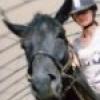

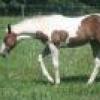
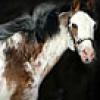
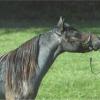
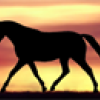


Re: What causes dapples?
Dapples are not really understood and I think they can be caused by many different things. My bay Oldenburg gets dapples when her coat is shiny and she's in a good weight. Grays often go through a dappled phase on their way to white or flea-bitten. I also think that sooty can cause a dappling effect.